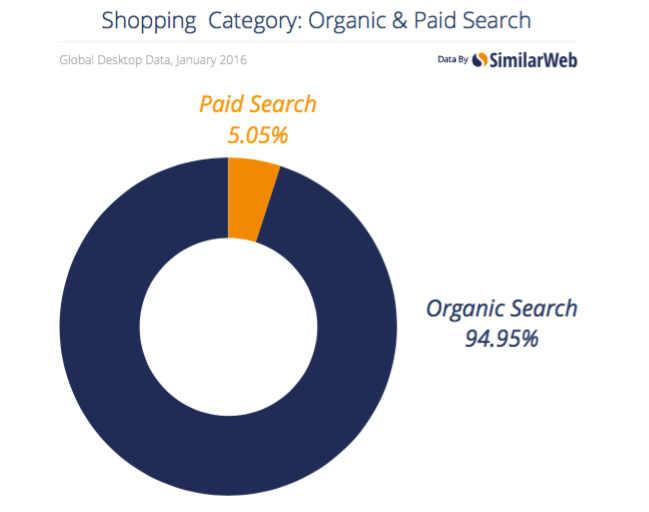Does this sound familiar? It’s been over a year since you launched your blog or website. You realize that despite the hard work that you’ve put into it on actionable things like SEO, content marketing and social media, you’re not even close to your projected growth. The failure hits you hard and you think to yourself, ‘how do I increase sales online fast?’
But here’s the good news. You’re here, and today I’m going to show you how to increase sales online quickly by taking advantage of the web traffic that you currently receive. The solution to your sales debacle is conversion rate optimization or CRO for short.
So, What is Conversion Rate Optimization?
Your conversion rate refers to the number of people who buy from you vs. your total visitors. So conversion optimization can simply be defined as any action that is taken to improve the percentage of visitors to a website that converts or become paying customers.
The calculation for conversion is simple: Total number of sales or conversions divided by total visitors times one hundred.
So if we had 111 visitors and 9 of them bought something, then our calculation would be: 9/111 = 0.081
0.081*100 = 8.1 (the percentage)
However, a conversion doesn’t have to be a sale. Any action that you want your website visitors to take that is important to your business’s bottom line can also be a conversion.
For example, if you wanted to grow your email list, then opt-ins can be conversions too. As long as the person is giving you something that can lead them to become paying customers, you’re converting. But it’s easy to confuse conversions with actions, so let’s clear it up.
Downloading a PDF from your website is an action. However, providing an email address before downloading a file from your site or completing your contact form are both conversions.
How to Increase Online Sales Conversion Rate
It’s time for the cure. Are you ready?
There are plenty of things that you can work on to improve the conversion rate on your website. The main ones we’ll discuss today are UX (user experience), website copy, social proof, a hint of urgency and putting yourself in your customer’s shoes (figuratively).
1. User Experience (UX)
Your visitors need to know the what, why and where to begin. This isn’t just for websites either. Your physical store needs to answer these questions quickly too.
Here’s an example:
Let’s say that you visited an ice cream shop for the first time. You immediately see a big menu on the wall that lists all their flavours and prices (the what). You notice a get 2 for 1 special and the whole place smells delicious (the why). The cashier also asked you if you would like to try a sample (begin here).
For a website, your headline answers the what. Your value proposition answers the why. Your CTAs (call-to-action) answer the where to begin. These things have to be clear from the start and that’s where user experience comes in.
Your presentation (design) and where you choose to place things affects your conversion rate a lot.
Should your sales button be on the left, centred or to the right-hand side? Should you ask for the sale at the end of the pitch or mid-way? These are just some of the questions that can be answered by monitoring user behaviour and performing UX tests.
Tools like Lucky Orange or Hotjar can help you ethically monitor visitors and optimize their experience, which leads to increased revenues for your company.
2. Website Copy
Good web copy doesn’t have to be complicated or filled with complex words, but it needs to be smart and persuasive. Selling online isn’t about forceful salesmanship but it’s about understanding the needs and wants of your customers.
When crafting web copy, you should use the same language that your target consumers use when referring to what you sell. This is why research into your audience is important.
Also, you must have clearly defined benefits and a well-written value proposition on your site. But keep in mind that writing for the web is slightly different from other channels.
3. Social Proof
There are various reasons why people hesitate to buy and one of them is lack of social proof. For many of us, testimonials come to mind but that’s not the only form of proof that can help you sell more stuff.
For instance, an eCommerce store with zero product reviews can highlight the number of successful shipments they’ve processed. Plus if these customers didn’t complain, they are also happy customers too, right?
A marketing agency that is yet to acquire customer reviews can create a newsroom on their website to show off press releases and featured publications on notable websites like Forbes.
An IT professional with no client feedback can highlight their certifications and the same goes for other experts in specialized fields. And for many experts, having a functioning and regularly updated blog is proof of expertise.
The point is: Social proof is anything that can help your visitor trust you. Nevertheless, there are five primary types of social proof and these are:
- Expert – When other people such as influencers or thought leaders, including organizations approve of you or your product. For example, studying at Yale or with [expert name] can be used as a form of social proof.
- Celebrity – Endorsements from celebrities can be powerful, especially, when you didn’t have to pay to get them.
- User – Feedback from product users such as customer reviews.
- “Wisdom of the Crowd” – This makes use of herd mentality and people’s fear of missing out. Essentially, if lots of people are doing something, others are more likely to adopt the same behaviour for very emotional reasons, rather than rational ones.
- “Wisdom of your Friends” – Recommendations from people that your target demographic knows or trust can encourage favourable actions on your website.
4. Urgency
Adding some urgency to your offers can boost sales. Things like “Just 1 day left at this price” or “2 left in stock” can force people to make decisions quickly. This is a good thing for your bottom line and the customer. Why?
Let’s be real, not a lot of people will go through the trouble of checking out something that they don’t already want or desire. So in most cases, it’s not because they don’t want your product, it’s because they ‘re having ‘cold feet’. A bit of urgency can give them just the right nudge.
5. Answer Their Questions
It’s generally a good idea to have a section on your website for frequently asked questions or at the very least, address potential questions that may arise on your landing pages.
Put yourself in your customer’s shoes for a while and think of the kinds of concerns that they’ll have when they visit your web page. Make sure those questions are answered.
Conversion Rate Optimization Tricks You Can Try
It’s time for a brain dump. Here are some conversion optimization tactics you can employ.
- Use landing pages
- Strong Headline
- Great value proposition
- Place your phone number at the top
- Compelling web copy
- Clear call to action (CTA)
- Short content paragraphs
- Eliminate distractions
- Easy navigation
- Have a mobile optimized site
- Ask for less information
- Use fewer price options
- Focus on emotional benefits
- Use big clickable buttons
- Clear font styles
- Good design and colour combinations
- Clearly identifiable click points or links
- Use visuals like videos or images
- Testimonials/reviews
- Add a no-lose or money back guarantee
- Give away a free trial
- Use trusted badges

I’m a freelance copywriter and SEO specialist. I aim to empower individuals and businesses with impactful marketing solutions and insights. In my downtime, I recharge by embracing the beauty of nature or cherishing moments with my loved ones. If you found value in this post, please consider sharing it.
Want a heads-up once a week whenever a new article drops?







